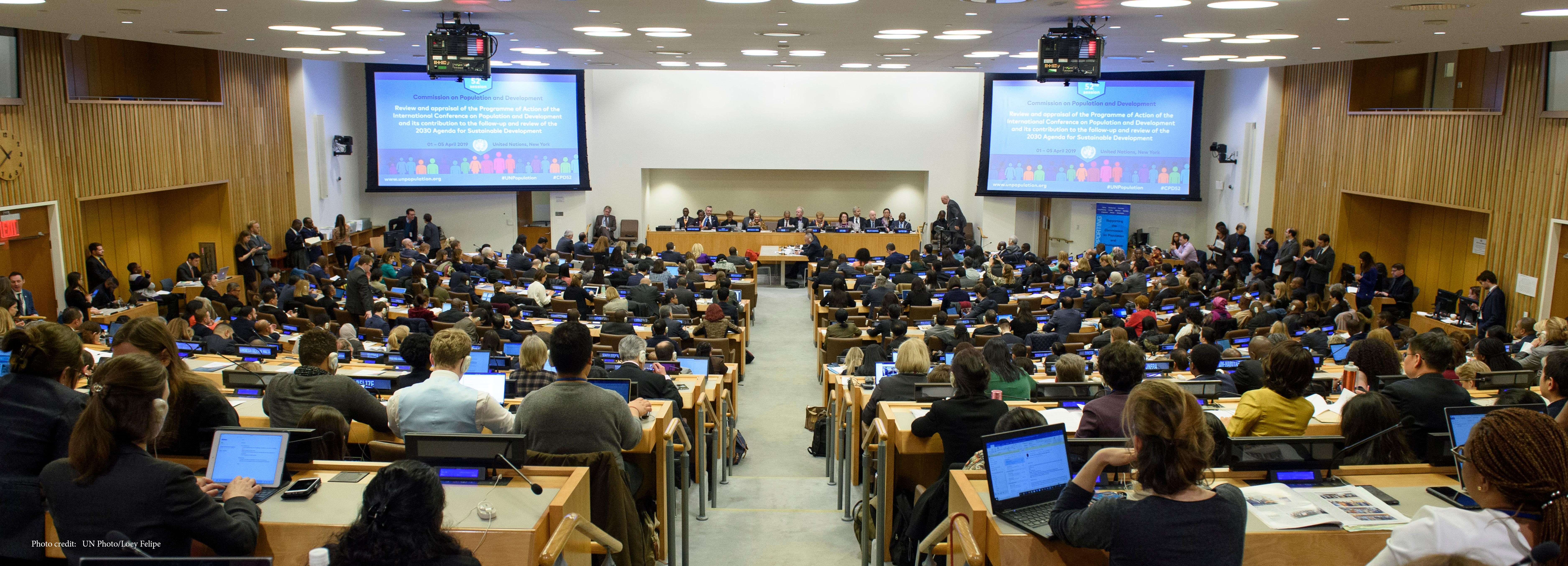Commission on Population and Development
A Population Commission was established by the Economic and Social Council in its resolution 3 (III) of 3 October 1946. In its resolution 49/128 of 19 December 1994, the General Assembly decided that the Commission should be renamed the Commission on Population and Development. In the same resolution, the Assembly decided that it, the Council and the Commission should constitute a three-tiered intergovernmental mechanism that would play the primary role in the follow-up to the implementation of the Programme of Action of the International Conference on Population and Development, and that the Commission, as a functional commission assisting the Council, would monitor, review and assess the implementation of the Programme of Action at the national, regional and international levels and advise the Council thereon.
Under its terms of reference the Commission is to assist the Council by:
- Arranging for studies and advising the Council on:
- Population issues and trends;
- Integrating population and development strategies;
- Population and related development policies and programmes;
- Provision of population assistance, upon request, to developing countries and, on a temporary basis, to countries with economies in transition; and
- Any other population and development questions on which either the principal or the subsidiary organs of the United Nations or the specialized agencies may seek advice.
- Monitoring, reviewing and assessing the implementation of the Programme of Action of the International Conference on Population and Development at the national, regional and global levels, identifying reasons for success and failure, and advising the Council thereon;
- Providing appropriate recommendations to the Council on the basis of an integrated consideration of the reports and issues related to the implementation of the Programme of Action.
The Commission is composed of 47 Member States elected by the Economic and Social Council for a period of four years on the basis of geographic distribution. Representatives should have a relevant background in population and development. It met typically every two or three years until 1994, after which it has met once a year.


